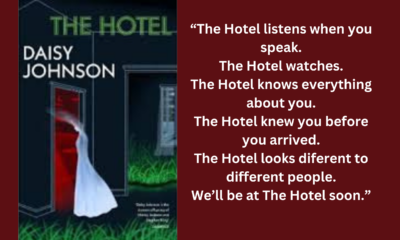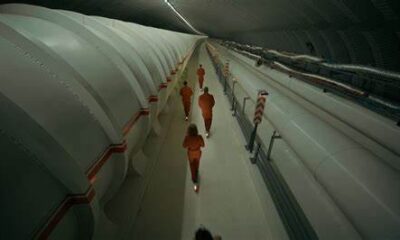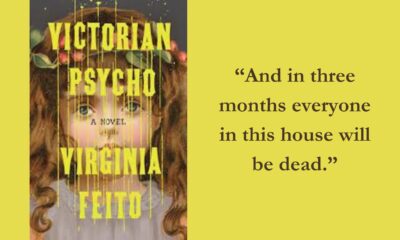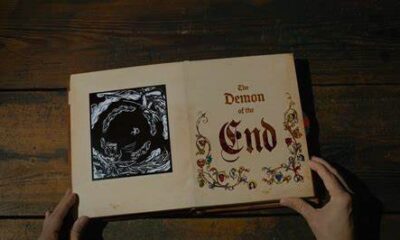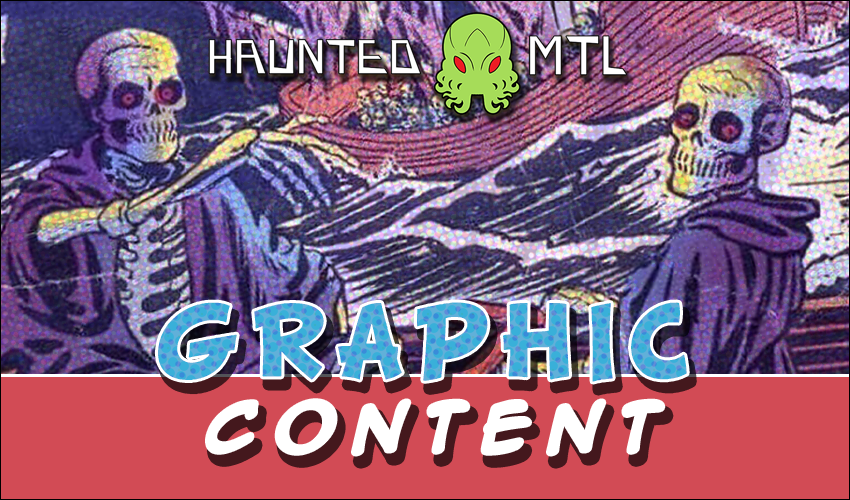
Graphic Content #30: Week of Sept. 5
More Videos
Published
3 years agoon
Welcome to the latest installment of Haunted MTL’s comic review column, Graphic Content. We’re switching things up this week, but we will get into why that is after the reviews. This week we’re covering the comics that crossed my radar the week of Sept. 5th, 2022. What horror goodness is awaiting you in local comic shops? This week we’re covering Killadelphia #24 and A Town Called Terror #6, in addition to two new titles, Shock Shop and Parasomnia: The Dreaming God.
Killadelphia #24 – “The End of All – Part VI – Time To Die”
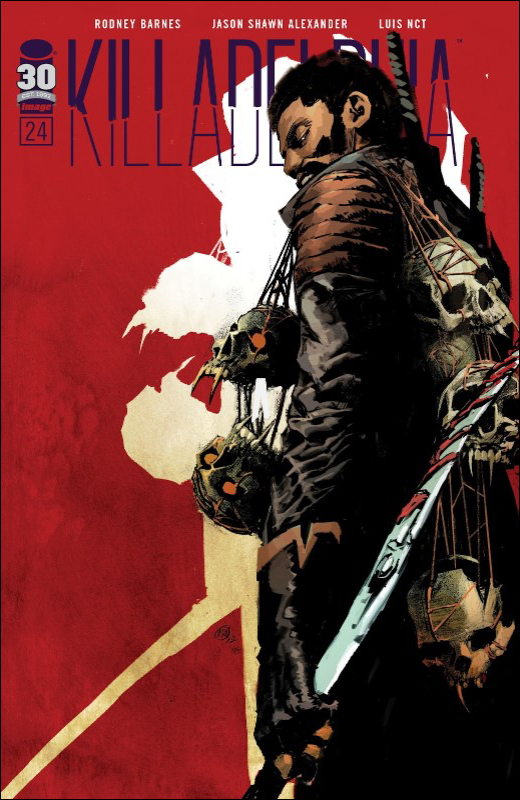
We last reviewed Killadelphia‘s 21st issue. This week we’re catching the latest installment, issue #24, titled “The End of All – Part VI – Time To Die.” This issue follows up the declaration of war between the surprising allies of vampires, werewolves, and a witch, as blessed vampire hunters are on the approach.
As a whole, the series continues to expand and the scale of the conflict has gone beyond merely vampires to something a little more cosmic. The forces of good and evil have their soldiers and the imminent clash promises a great amount of excitement. Rodney Barnes has done a great job in this issue positioning the characters and their relationship to the conflict. We see some losses, but the conflict still has a ways to go before it resolves.
Visually, Jason Shawn Alexander presents a wonderful character-building moment through his art, depicting a character’s childhood recollection in childish, crayon-illustrated images. The double-page spreads in particular offer some highly cinematic moments as well. Luis Nct’s colors contribute significantly to the affair, with many pages in an apocalyptic red overlay.
Impressions of Killadelphia #24
Killadelphia‘s 24th issue presents some positioning of characters before the massive battle between literally forces of good and evil. What began as a series about vampires in Philly has become an exploration of the nature of humankind and monsters punctuated with stories and experiences of the sins of the past and their legacy to communities of today.
 (5 / 5)
(5 / 5)
Killadelphia is written by Rodney Barnes and illustrated by Jason Shawn Alexander. Luis Nct handles colors. You can find Killadelphia via Image Comics or your local comic shop.
Shock Shop #1
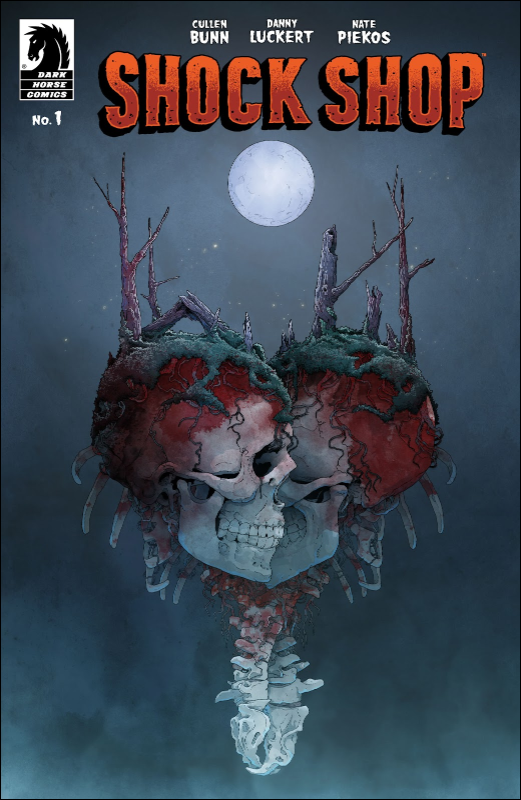
Cullen Bunn’s series Shock Shop opens with a tribute to horror hosts and the comic creeps of Creepy and Tales From the Crypt. The whole issue is comprised of anthologized tales The first is titled “Something in the Woods, in the Dark.” The first store presents a tight little body horror story intermixed with relationship drama among a circle of friends on a hike.
The second story, “Familiars,” follows a divorcee who moves into a new home that presents an initially helpful presence. The story plays on folkloric stories of elves and gnomes with a twist.
Both tales “end” at a cliffhanger, to be continued in the following issue. Yikes.
Danny Luckert’s illustrations in the first story are excellent, finding the right balance between realism and comic-book illustration. I also appreciate some of the character likenesses, which almost cast the live-action adaptation of this story we may see someday. Luckert also does a fantastic job with the colors, allowing the character line art to stand out without muddying the results. It does what Alien did, but much stronger.
Leila Leiz’s illustrations for the second story are decidedly rougher in style but thematically appropriate to the story. There is a whimsy in the art that reflects the whimsy of the associated story.
Impressions of Shock Shop #1
Shock Shop presents the horror anthology comic, like Creepshow, with a twist in that stories are not contained to a single issue. Both features in this first issue will be continued in the second issue. It’s a novel approach, and at least for the first two features it works pretty well. Specifically, each ends with a little shock, and the single-page introductions with series host Desdaemona Nimue Moreau.
With that said, an anthology series where the anthlogized tales are stretched over two (potentially more) issues may run the risk of wearing thin. With that said, this issue worked out quite well.
 (4 / 5)
(4 / 5)
Shock Shop is written by Cullen Bunn and illustrated by Danny Luckert. You can find Shock Shop via Dark Horse Comics or your local comic shop.
Parasomnia: The Dreaming God #1
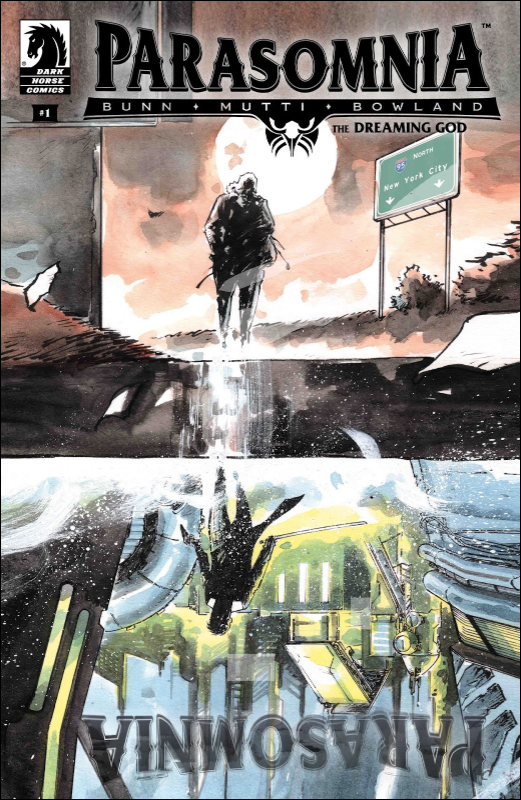
One writer, two books this week as we dive into Cullen Brown’s Parasomnia: The Dreaming God. The series involves the search for a missing child in a cyberpunk reality set against the real world and a dreamscape.
While Shock Shop was fun overall, Parasomnia feels dreary and is a bit of a slog to read through. The dialogue, in particular, struck me as very clichéd and took me out of the story. I felt a little bored by it. The hook of a missing child was not enough to endure the sheer amount of “things” introduced in this first issue. Cults in a cyberpunk future should be cool, but this feels tiring.
Andrea Mutti’s artwork, however, is dazzling and makes a bleak but visually interesting cyberpunk future. The usage of watercolors across the heavy black inking works out quite well and gives the setting a textured quality, as though steam and grime pervade every square inch of this future.
Impressions of Parasomnia: The Dreaming God #1
Cullen Brown’s second book that crossed my radar this week left me feeling pretty cold. There is a lot going on; the juxtaposition of contemporary and cyberpunk settings, and glimpses of a more low-tech one, feel a little much. The script tosses readers into the deep end and hopes they can pick up on what is going on. The dialogue, in particular, crosses the line between vague and expository like a tug-of-war.
Visually, this is a gorgeous comic, and Andrea Mutti deserves praise for the art. The setting isn’t anything new and her vision of cyberpunk is about what one would expect. However, through the heavy black inking and watercolor coloring cyberpunk takes on a dreamlike quality.
 (3 / 5)
(3 / 5)
Parasomnia is written by Cullen Bunn and illustrated by Andrea Mutti. You can find Parasomnia via Dark Horse Comics or your local comic shop.
A Town Called Terror #6
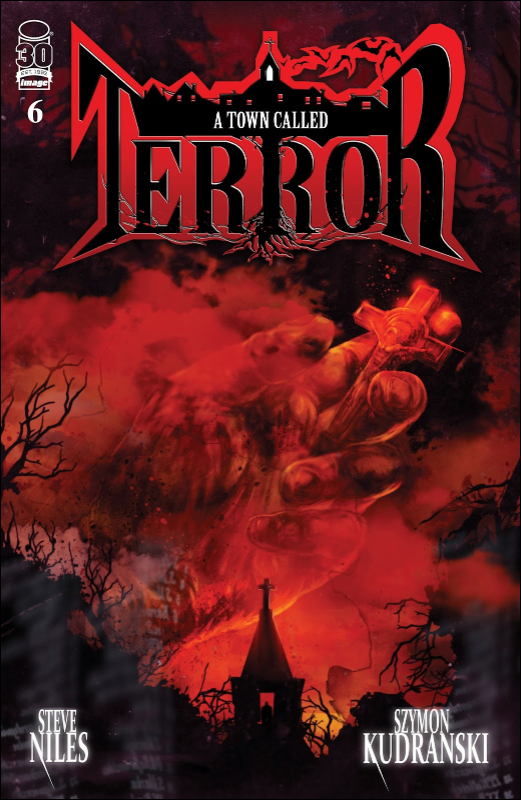
A Town Called Terror is some parts Dark Shadows stitched together with the works of Clive Barker and a dash of the rural oddity of Twin Peaks. The comic so far has been an interesting one but a bit stilted due to the pacing.
Steve Niles only works with about 25 pages an issue on a slow-burn family drama is interesting enough but can also be frustrating. Just as frustrating is that there is a lot of information about Terror itself that would be great to have but is just hinted at. None of the characters have pulled me in, either. I am at issue #6 and have yet to feel much for anyone besides Julie, who is only now finding her way into the events after Henry was kidnapped.
Putting it another way: the comic features a deadly brawl that I felt no real investment in because six issues in, I hardly know the characters in that they are hardly characters.
Visually, the comic is fun, albeit very, very red. Symon Kudranski works from heavy photo references, but the inking style compliments them well, drenching his figures in noirish shadows. Due to the photo referenced figures, the posing can feel a bit stiff, however. The posing saps the excitement of what should have been a dynamic battle scene between a father and son.
Impressions of A Town Called Terror #6
A Town Called Terror has been a breezy read issue to issue, but it has also been a little superficial with some somewhat generic beats, almost predictably. A character will be mentioned in a conversation early on, only to make a shocking appearance by the end of the issue. The dialogue is also fairly rote with character voices blurring together. The setting itself is hinted at having all of these interesting dynamics we do not get to see as we’ve been stuck in six-installments of turgid family drama.
But hey, at least it looks pretty good.
 (2.5 / 5)
(2.5 / 5)
A Town Called Terror is written by Steve Niles and illustrated by Symon Kudranski. You can find A Town Called Terror via Image Comics or your local comic shop.
Graphic Content Going Forward
Permit me, if I may, to explain the changes in this installment of the column and the plan going forward. For a long time, I have struggled with what exactly the column should be because, if you have seen previous installments, you’ll see I can be a little wordy in my assessments. It’s not necessarily bad because I have a lot to say as someone who draws and writes comics. However, it makes it hard to keep current when I realize I am pouring a few hundred words into a title or two a week if I am lucky.
So, a couple of things: the goal is to do this weekly, which means that I will try to review the latest releases as I stumble across them and as budget permits. I also may not be 100% up to date and may review a release a week or two later based on what is on my plate. My goal is to review at least three titles a week. That also means some weeks, there may not be many horror comics. In lean weeks I may dip into some older titles for fun.
If you miss my more long-form comic reviews and insights, I would suggest keeping an eye out for the next installment of Graphic Content: Just Swamp Things, which I am desperate to return to. I want to continue following the series from the earliest run up through the Alan Moore era.
But, dear reader. What do you think of the approach? Sound off in the comments, and let us know what comic sounds best to you.
David Davis is a writer, cartoonist, and educator in Southern California with an M.A. in literature and writing studies.

You may like
Horror in graphic novels
Read Hide if you need a dark graphic novel to talk about over Thanksgiving
Published
5 months agoon
November 24, 2024Thanksgiving is coming up this week if you live in America. And many of us are going to be in contact with younger relatives. And some of you might be on a mission to be the cool/bad influence relative that introduces them to the horror genre. If so, I have just the graphic novel for you.
Published in September of 2023, Hide is based on the novel of the same name by Kiersten White. It was adapted into a graphic novel by Scott Peterson, and illustrated by Veronica and Andy Fish. It tells the story of fourteen people who believe they are in a reality show, playing Hide and Seek in an abandoned theme park. It should surprise absolutely no one to find out that the creators of the show have something much darker in mind.
The story
Our main character is Mack. She’s had about the worst rough start to life one could imagine and is currently living in a homeless shelter. There, she’s given the opportunity to participate in a game show, playing hide-and-seek.
I like to think that if the shelter manager had known of Mack’s horrific past, she wouldn’t have ever made that suggestion.
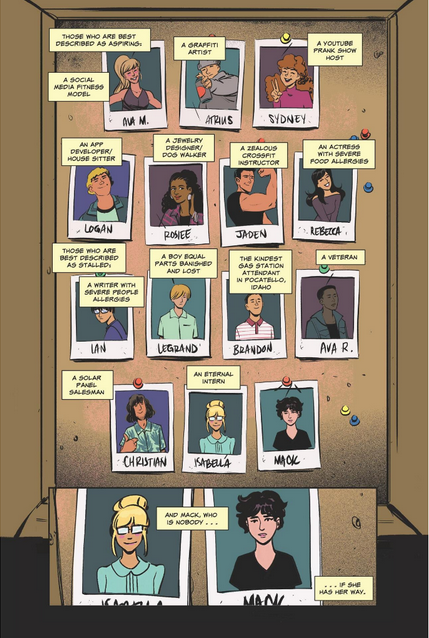
Mack signs up and soon finds herself in an abandoned amusement park with thirteen strangers. The rules are simple. Hide during the day, and be the last person found. Of course, this is nothing but a lie. There will be no winners, only victims.
What works
The first thing we have to talk about is how Hide the graphic novel compares to Hide, the original book. Of course, there wasn’t going to be enough room for every single part of the story. There were some cuts. But it doesn’t feel like anything essential was cut here. The characters remain the same. The storyline is still there, sans any structural issues. Often, this is a difficult thing to do. Some stories don’t translate from one medium to another. But Peterson did a wonderful job.
Of course, we can’t talk about a graphic novel without talking about the art. And the art in this book is fantastic. The colors are rich and vibrant. Everything looks exactly like one might picture it when reading the novel.
Except for the monster, which I have to admit I pictured more like a Rat Creature from Bone.
My favorite part was the journal entries. I loved the cryptic sigils that are scribbled over the page without explanation. I loved the different handwriting. I loved the clippings of newspapers and pictures. The whole thing was just wonderfully, eerily, immersive.
Finally, I want to point out that Hide is a great graphic novel even if you’ve never read the book, and never intend to. This is not a companion for the book. It tells the story all on its own. And yes, reading a graphic novel is just as valid as reading any other novel. This is just a good story, with good artwork. No other reading is necessary.
What didn’t work
There was only one thing I didn’t love about Hide. And that was the ending.
It’s usually the ending.
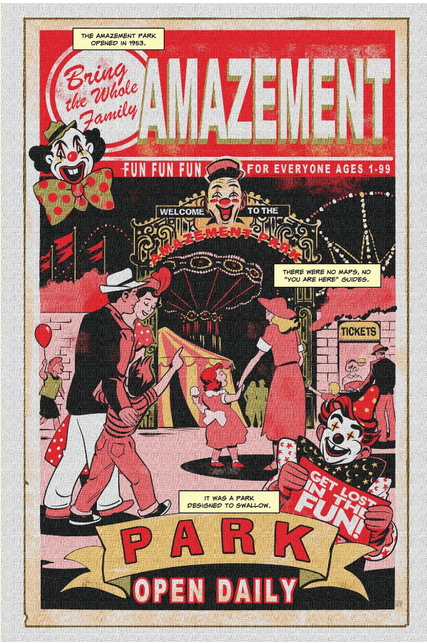
In the novel, the ending is ambiguous but satisfying. This ending was, without ruining it, a little more ambiguous. There are questions I really wanted answers for that I didn’t get. There is at least one character that I’d like to know about. Are they okay? I don’t know. And this ending doesn’t even really give us a hint. All we can do is hope.
If you are going to be picking this up for a younger person, be aware that there is some rough language. There are also a few graphic scenes of violence, so if that’s the sort of thing that will get you banned from further holiday events, be aware. But if you have a tween or teen who needs to be encouraged to delve into the creepy side, Hide is a great way to do it. Of course, there’s no shame in just reading it yourself.
 (4.5 / 5)
(4.5 / 5)
Book Reviews
Vermis II: Mist & Mirrors, a Book Review
Vermis II: Mist & Mirrors is a graphic novel by Plastiboo, acting as the “official guide for a game that doesn’t exist.”
Published
7 months agoon
September 17, 2024Vermis II: Mist & Mirrors is a graphic novel by Plastiboo. The team behind the work includes Plastiboo as the artist, Hollow Press as the publisher, Michele Nitri as the editor, Christian Dolz Bayarri as the graphic designer, Marco Cirillo Pedri as the graphic supervisor, and E.R. as the English editor and proofreader. The Vermis collection seems sold out in its current editions, but I still recommend ordering from the original publisher, Hollow Press.
Who stares back from the dark glass? The Wayfarer travels–cursed and haunted by their past–through the distant lands and places within the Mist & Mirrors. Endure a corrupt world and struggle to fend off the curses that mark you. Venture forth, Wayfarer, and perhaps find peace and salvation.

What I Like about Vermis II: Mist & Mirrors
The premise remains an “official guide” to a game that does not exist. However, one key distinction that stands out is the corrosion of this “official guide” mark, suggesting Mist & Mirrors centers itself as a graphic novel. In this sense, it more accurately hits its vision while providing an engaging story.
Mist & Mirrors places its character selection at the end of the graphic novel, instead, choosing a character and allowing the reader to follow that journey. While this moves away from the “official guide” concept, it better fleshes out the world and creates a more independent product.
Where Vermis I held a heavy retro-game aesthetic, Vermis II takes this to the next level while adding a wider range of color than the original. Not only does this add more aesthetic variety, but it also vastly improves readability. My greatest critique of the first graphic novel was the general lack of readability that impacted the experience, but Mist & Mirrors seems to take this to heart. Beyond the variety and improvement, the design changes the color themes to match the distinct lands the “Wayfarer” embarks on, giving a direct purpose to the changes.
On starting the graphic novel, I half expected a spiritual successor set in a new world. While its setting certainly differs from the original, Mist & Mirrors expands on the lore and history. In fact, the exploration of Mist & Mirrors adds value to the original and encourages a re-read. Honestly, that’s what all sequels strive (or should strive) to succeed.
Despite the colorful innovation, Vermis II: Mist & Mirrors delivers that same bleak horror popularized by Dark Souls. It still wears its inspirations on its sleeves while better communicating its “game mechanics.”

Tired Tropes and Triggers
Again, there aren’t many points worth mentioning regarding tropes or triggers. As the graphic novel takes themes and trends from the Soulslike genre, it’s dark and bleak but not overwhelmingly so.
Payment and delivery (for American audiences) still come with a 15 to 45-day wait period with little room for verification or updates. The process through PayPal remains seamless, and I received the novel within the timeframe, but it’s a consideration.
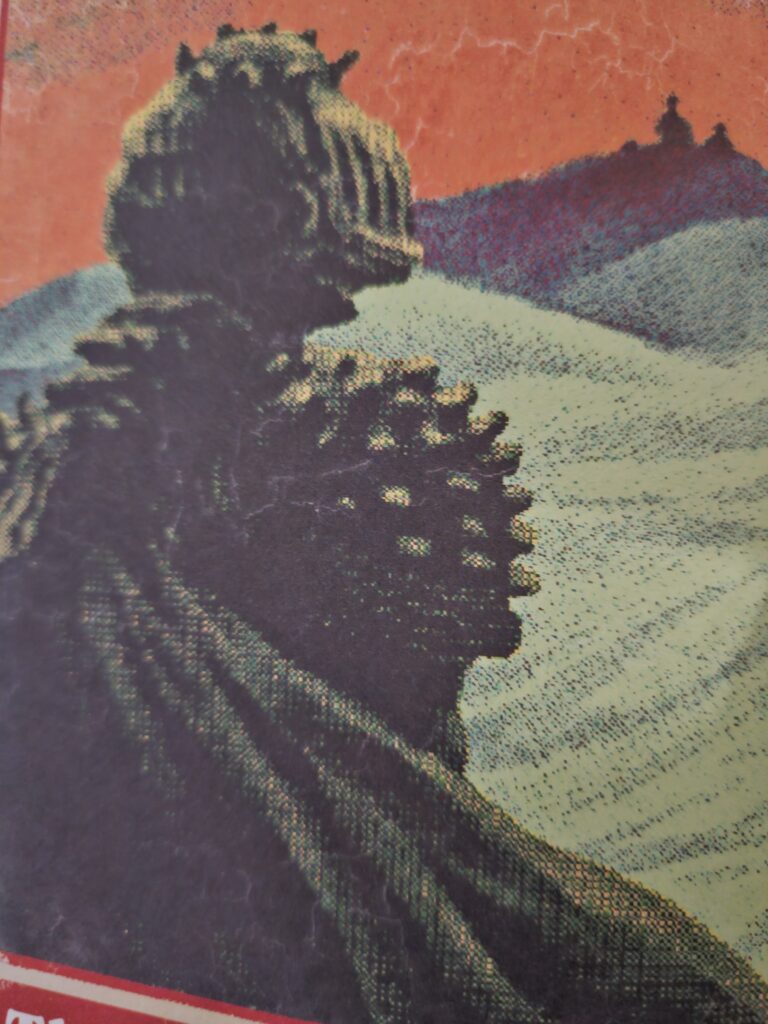
What I Dislike about Vermis II: Mist & Mirrors
While there are notable points to mention in this section, Mist & Mirror vastly mitigates Vermis I’s core issues. However, that isn’t inherently the same as fixing them in some cases. For example, readability remains a slight issue. I will emphasize it as a slight issue with the vast improvements implemented.
For those fans of the specific niche that Vermis aims to deliver, Mist & Mirrors tones down the “official guide” aspect. Instead, it favors a more straightforward narrative that follows a specific character. This brings life to the “game world” and makes an independent product but limits Vermis I’s game guide concept.
On a more personal note, I did enjoy the concept of Vermis I’s classes over the classes of Mist & Mirrors. Naturally, there are some interesting concepts, but nothing haunts me like the Infant Seeker or Rat Man. However, the new choices seem to provide a stronger narrative and backstory.
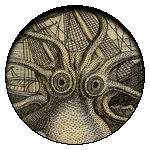
Final Thoughts
Vermis II: Mist & Mirrors vastly improves in many aspects of the original, telling a story set in its bleak and fascinating world. While it does veer from the original concept, it does so to make a more independent product. If you are looking to lose yourself in a strange world or dive deeper into Vermis’ underexplored lore, Mist & Mirrors seems tailor-made for you.
Published in April of this year, Bad Dreams in The Night is a collection of horror comics by the artist and author Adam Ellis. With the description stating that it is a graphic novel version of Scary Stories to Tell in the Dark, I had to get my hands on it. And it did not disappoint.
The stories
Bad Dreams in the Night consists of eleven short horror stories. I honestly don’t think there’s a bad one in the whole bunch. So let’s just highlight a few.
Easily my favorite story in the book was Little House in the Sea. It’s a sweet, eerie little tale that seems like a pinprick view into a dark and horrifying world. It left me with so many questions that I fear will never have answers. The story is about a young woman and her mother, who live on a little island all alone. The young woman is never to ask about what is on the other side of the sea. Then, her mother dies. And everything changes, but not by a lot.
Green Ribbon was another great story. It’s a retelling of the classic Girl With a Ribbon story from the original Scary Stories book, in which a man is confused and eventually angry that the love of his life wears a ribbon around her neck and won’t tell him why. I liked this updated version. It’s a stark reminder that just because we marry someone, we aren’t owed all of their secrets.
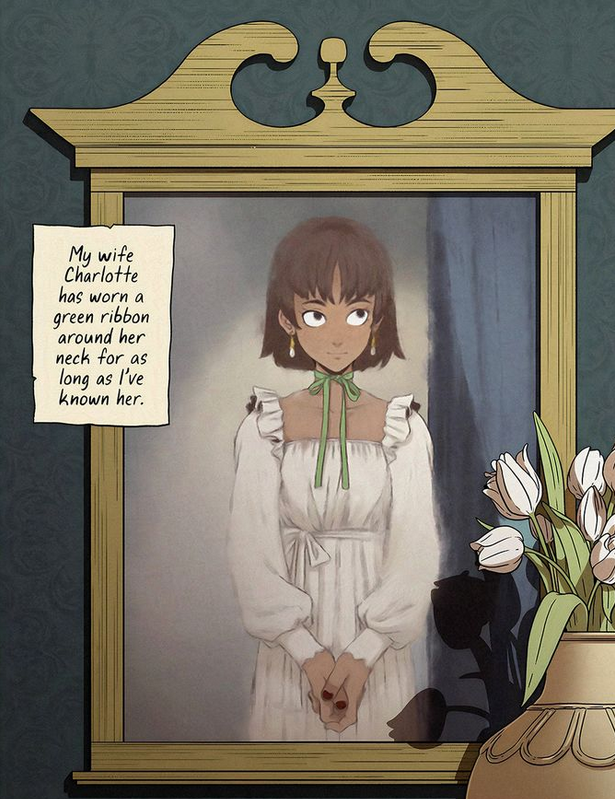
What worked
Of course, the first thing I have to point out about Bad Dreams in the Night is the fantastic artwork. Ellis was a cartoonist first, and it shows.
The artwork is part of the storytelling as well. The best example of this is the story Better Kate Than Never. The younger sister character, Taffy, has such an animated face during the scenes with a ‘studio audience’. When she is just herself, her face is flat, and far more mature than we’d expect for a girl her age.
Though, I suppose based on the story, she might be any age.
Another really enjoyable thing was the mini-essays at the end of each story. As a creator myself, I love the little peeks into the creative process. I know how I come up with stories. But it’s different for everyone, and the story behind the story is often just as fun.
Finally, I have to praise a feature that applies to Ellis’s work overall, not just this book. Whenever he writes scary stories (and he has posted quite a few on his social media) they are a fascinating blend of cute and horrifying. The artwork always has a lovely, innocent, cartoonish look. The children always look like cartoon children, with exaggerated large heads and wide circular eyes.
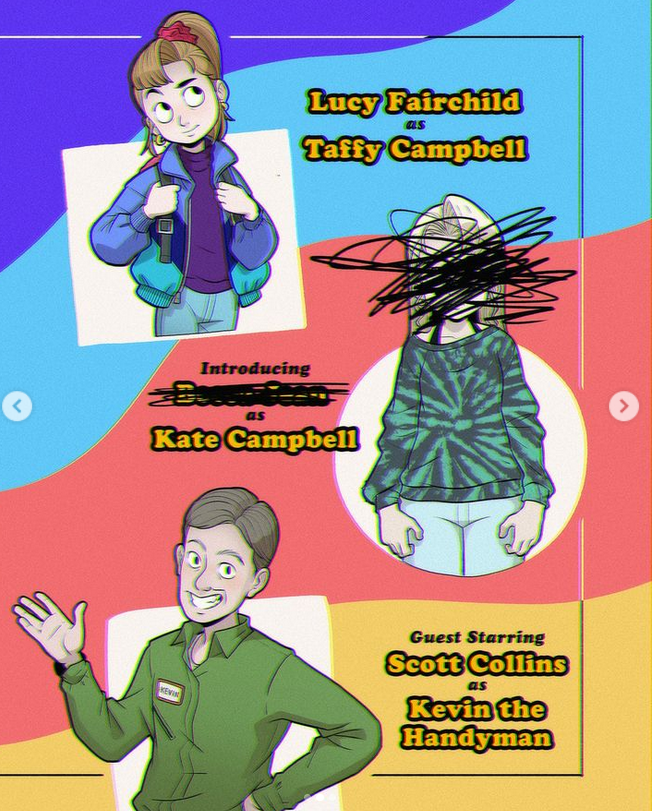
At the same time, Ellis doesn’t pull any punches when it comes to the blood and gore. One story in particular, Milk Door, is a perfect example of this. I don’t want to spoil the ending for you, but it is graphic, horrifying, and wonderful.
What (kind of) didn’t work
I only have one issue with this book. If you follow Ellis on social media, you’ve likely seen at least some of these stories before.
Though, even as I say this, I’m not sure what could have been done about it. Only the beginnings were shown on Instagram. This was a marketing tactic and an effective one. You get the setup for free, but you have to read the book for the punchline.
Bad Dreams in the Night was a really enjoyable way to spend a few hours. In the end, my only real complaint is that it could have been longer. But of course, that is one of the chief rules of entertainment. Always leave people wanting more.
(usr 5)
By the way, if you like this you might enjoy my haunted apartment novella, Quiet Apocalypse. The main character is a modern witch, and I share some real magic in this fictional story of an unexpected end of the world.

